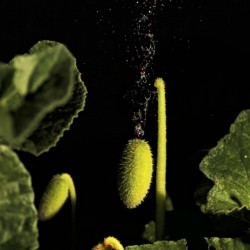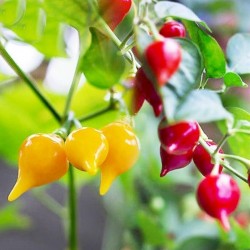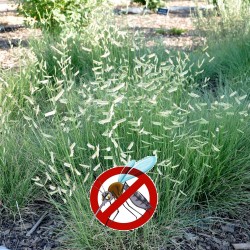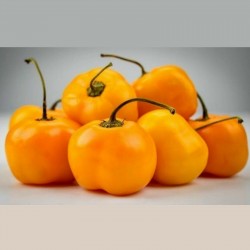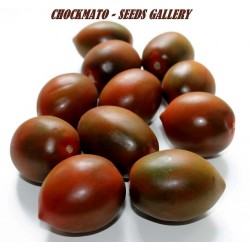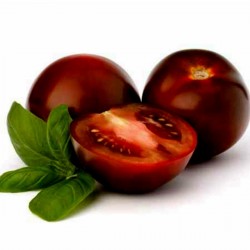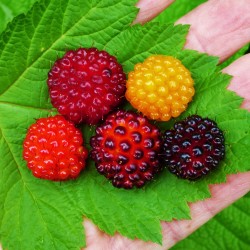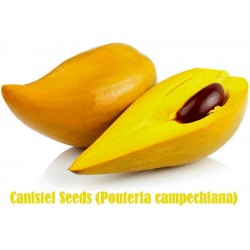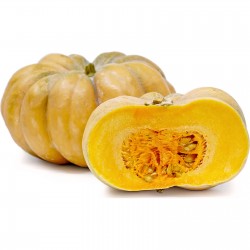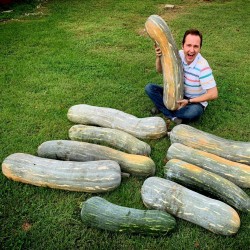.png)
Variety from Greece
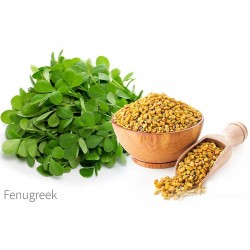
Семена Па́житник сенно́й,...
Цена
1,15 €
SKU: VE 64 (2g)
Seeds Gallery Com,
5/
5
<h2><strong>Семена Па́житник сенно́й, па́житник гре́ческий, шамбала́ (Trigonella foenum-graecum)</strong></h2>
<h2><span style="color: #ff0000;"><strong>Цена за пакет из 140 (2 g) семян.</strong></span></h2>
<p><b>Па́житник сенно́й</b>, или<span> </span><b>па́житник гре́ческий</b>, или<span> </span><b>шамбала́</b><sup id="cite_ref-1" class="reference"></sup><span> </span>(лат. <span lang="la" xml:lang="la">Trigonélla foénum-graécum</span>) —<span> </span>однолетнее<span> </span>растение;<span> </span>вид<span> </span>рода<span> </span>Пажитник<span> </span>семейства<span> </span>Бобовые(подсемейство<span> </span>Мотыльковые).</p>
<p>Произрастает в<span> </span>Восточной Европе, на<span> </span>Кавказе, в гористых местностях<span> </span>Армении,<span> </span>Турции,<span> </span>Ирака,<span> </span>Ирана<span> </span>и<span> </span>Средней Азии, встречается также в<span> </span>Египте<span> </span>и<span> </span>Эфиопии. Культивируется повсеместно. Предпочитает солнечные места произрастания с<span> </span>глинистой<span> </span>почвой.</p>
<h2><span class="mw-headline">Названия</span></h2>
<p>Латинское название<span> </span><i>foenum-graecum</i><span> </span>означает<span> </span><i>греческое сено</i>. Растение также известно как фенугрек (<i>fenugreek</i>), шамбала, хельба (хильба), метхи (<i>methi</i>), чаман<sup id="cite_ref-2" class="reference"></sup><sup id="cite_ref-3" class="reference"></sup>, верблюжья трава<sup id="cite_ref-4" class="reference"></sup>.</p>
<h2><span></span><span class="mw-headline">Ботаническое описание</span></h2>
<div class="thumb tleft">
<div class="thumbinner"><img alt="Семена Па́житник сенно́й, па́житник гре́ческий, шамбала́ (Trigonella foenum-graecum)" src="https://upload.wikimedia.org/wikipedia/commons/thumb/c/ce/Illustration_Trigonella_foenum-graecum0_clean.jpg/220px-Illustration_Trigonella_foenum-graecum0_clean.jpg" width="220" height="363" class="thumbimage" title="Семена Па́житник сенно́й, па́житник гре́ческий, шамбала́ (Trigonella foenum-graecum)">
<div class="thumbcaption">
<div class="magnify"></div>
Ботаническая иллюстрация<span> </span>из книги<span> </span><span class="nowrap">О. В. Томе</span><span> </span><i>Flora von Deutschland, Österreich und der Schweiz</i>, 1885</div>
</div>
</div>
<p>Растение высотой до 60 см с очерёдными тройчатосложными<span> </span>листьями<span> </span>длиной 2 см;<span> </span>листочки<span> </span>яйцеобразные и по краям немного зубчатые.</p>
<p>Стебель<span> </span>ветвистый, округлый,<span> </span>корень<span> </span>стержневой.</p>
<p>Цветки<span> </span>сидячие, по одному — два в пазухах листьев, мотыльковые, очень маленькие, желтовато-белые, а в основании светло-фиолетовые. Растение цветёт с мая до июня.</p>
<p>Из цветков развиваются длинные (до 10 см) узкие (толщиной 4—5 мм) голые или опушённые<span> </span>бобы<span> </span>с твёрдыми прямоугольными<span> </span>семенами.</p>
<h2><span></span><span class="mw-headline">Хозяйственное значение и применение</span></h2>
<div class="thumb tright">
<div class="thumbinner"><img alt="Семена Па́житник сенно́й, па́житник гре́ческий, шамбала́ (Trigonella foenum-graecum)" src="https://upload.wikimedia.org/wikipedia/commons/thumb/5/5a/Fenugreek_seeds%28%E0%A6%AE%E0%A7%87%E0%A6%A5%E0%A6%BF%29.JPG/220px-Fenugreek_seeds%28%E0%A6%AE%E0%A7%87%E0%A6%A5%E0%A6%BF%29.JPG" width="220" height="201" class="thumbimage" title="Семена Па́житник сенно́й, па́житник гре́ческий, шамбала́ (Trigonella foenum-graecum)">
<div class="thumbcaption">
<div class="magnify"></div>
Семена</div>
</div>
</div>
<p>В качестве<span> </span>лекарственного сырья<span> </span>используют семя пажитника сенного (лат. <span lang="la" xml:lang="la">Semen Trigonellae foenum-graeci</span>), собранное в фазе зрелости, содержащее до 1,34 % суммы<span> </span>стероидных сапонинов<span> </span>(диосгенин, тигонин, ямогенин).</p>
<p>Всё растение обладает интенсивным запахом.</p>
<p>Семена пажитника незаменимы для приготовления многих блюд<span> </span>индийской кухни, например,<span> </span>дхала. Молодые побеги используют в качестве<span> </span>приправы<span> </span>к мясным блюдам и в сыроварении. Входят также в состав смеси приправ<span> </span>хмели-сунели<span> </span>и смеси чаман, которой покрывают вяленую мясную вырезку —<span> </span>бастурму. Содержат большое количество<span> </span>галактоманнана, известного под названием «камедь пажитника», который используется как<span> </span>пищевая добавка<span> </span>Е417.</p><script src="//cdn.public.n1ed.com/G3OMDFLT/widgets.js"></script>
VE 64 (2g)








